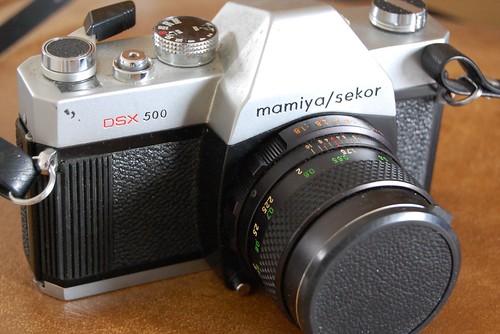Difference between revisions of "Mamiya DSX 500"
m |
Hanskerensky (talk | contribs) m (Changed rights image mhaithaca/3354217848 from wp to nc after checking flickr image) |
||
| Line 5: | Line 5: | ||
|image_text= Mamiya/Sekor DSX 500 | |image_text= Mamiya/Sekor DSX 500 | ||
|image_by= Mark H. Anbinder | |image_by= Mark H. Anbinder | ||
| − | |image_rights= | + | |image_rights= non-commercial |
}}The '''[[Mamiya]] DSX''' came in two models, the '''DSX 500''' and the '''[[Mamiya DSX 1000|DSX 1000]]'''. Both offered a choice of [[TTL]] averaging or spot metering, selected with an A/S switch alongside the lens mount. The numerical model designation referred to the fastest shutter speed offered by each; and the DSX 500 also lacks the self-timer found on the DSX 1000 | }}The '''[[Mamiya]] DSX''' came in two models, the '''DSX 500''' and the '''[[Mamiya DSX 1000|DSX 1000]]'''. Both offered a choice of [[TTL]] averaging or spot metering, selected with an A/S switch alongside the lens mount. The numerical model designation referred to the fastest shutter speed offered by each; and the DSX 500 also lacks the self-timer found on the DSX 1000 | ||
Revision as of 06:15, 8 March 2013

|
| Mamiya/Sekor DSX 500 image by Mark H. Anbinder (Image rights) |
The Mamiya DSX came in two models, the DSX 500 and the DSX 1000. Both offered a choice of TTL averaging or spot metering, selected with an A/S switch alongside the lens mount. The numerical model designation referred to the fastest shutter speed offered by each; and the DSX 500 also lacks the self-timer found on the DSX 1000
The related MSX 500 and MSX 1000 were similar cameras, but only offering the spot-metering option. All these models used the SX series of Mamiya 42mm screw lenses. SX-series Mamiya lenses have a lens mount lock (unlike previous Mamiya threaded lenses) and a mechanical pin which transmits the f-stop information to the camera, eliminating the need to stop down for metering.